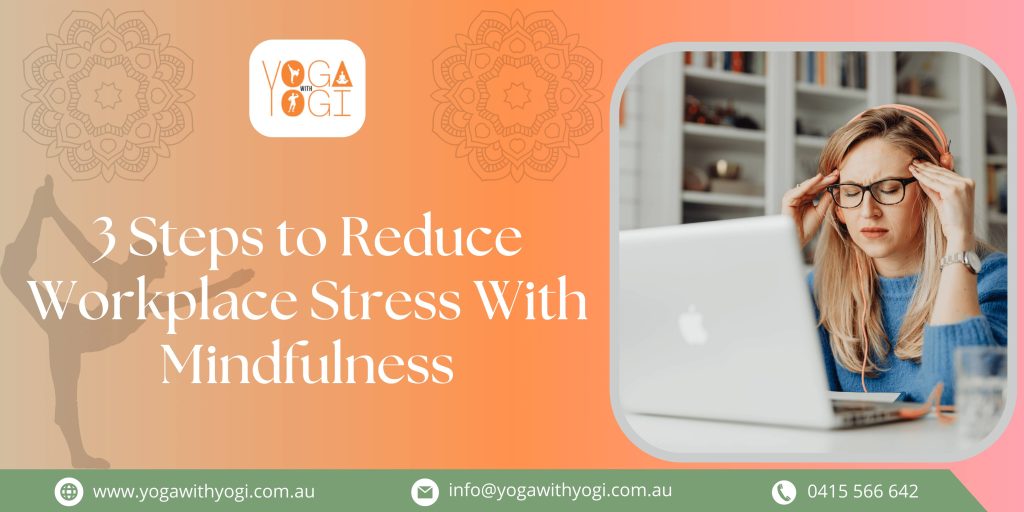Do you feel pressured at work? Consider setting aside some time to practice yoga. According to recent studies, yoga is particularly good at lowering stress from the workplace. A recent issue of the Journal of Occupational Health featured a paper that examined the results of 15 experiments on healthcare workers that used various forms of physical relaxation to reduce stress. The analysis revealed that yoga appeared to have better outcomes than other ways for reducing work-related stress, even if all physical relaxation techniques did so. In fact, corporate yoga sessions are getting more popular than ever given the many benefits associated with yoga. You can find out more about the ways to improve mindfulness at Yoga Studio Castle Hill. As of now, let’s discuss three steps that can help to reduce the stress –
First and foremost, it’s critical to make an effort to identify triggers as they develop and bring self-awareness to emotions of stress as soon as they do.
When you work in a hectic environment, it can be challenging to put your own feelings aside in order to focus on “more important” issues. Alternately, you can always feel under strain and be on the verge of blowing up at the slightest provocation. If you can control your reactions, you’ll be able to start breaking patterns and identify triggers, such as people or situations, without getting emotionally engaged or allowing anger control your responses. Keep an eye out for what makes you respond and what triggers your emotions, such as tension, anxiety, or rage.
It is crucial to take the time to practice being conscious of each scenario as it presents itself and to start tuning into those around you.
Understanding why someone acted a certain way or why a broken printer is such an issue for you can be made easier if you can learn to identify when something irritates you or empathize with the person who is making you unhappy. By doing this, you will be better able to approach a situation with compassion and begin a conversation without getting angry. Perhaps the person you are upset with feels abandoned or is overburdened with work. Whatever the cause, give yourself some time to let compassion and understanding for the other person’s perspective lead you.
How can you make things better? What would you do if you had just arrived at the company without any prior emotional involvement? Offer an alternative, provide more training, or speak with them to better understand their workload?
Reacting with mindfulness can have a significant impact on both you and those around you. Since you’ll be able to approach others from a place of kindness and honesty rather than mistrust or resentment, your stress levels and the connections you forge will likely benefit greatly.
An exercise to make improve mindfulness
Find a calm location, sit down, close your eyes, and examine your physical body. Where do you feel the tension?
Keep an eye out for any physical sensations and try to relax any tense muscles, such as those in your jaw, tongue, shoulder, or fingers.
Look for any signs of tension or anxiety in your body, such as tightness in the chest or churning in the stomach.
Where do you feel it in your body if your thoughts start to wander to a story about what just happened?
Avoid letting yourself become emotionally involved in a narrative, labeling the trigger or making conclusions about it. Try to act as if you are looking through a glass window as a passive observer.
As you experience an emotion in your body, try to refrain from adding your own personal perspective to the story.
Avoid letting yourself become emotionally involved in a narrative, labeling the trigger or making conclusions about it.
Start focusing on the breath instead of the emotion as you sit and pay attention to these sensations.
Long yet slow inhalations and exhalations could be another way out.





